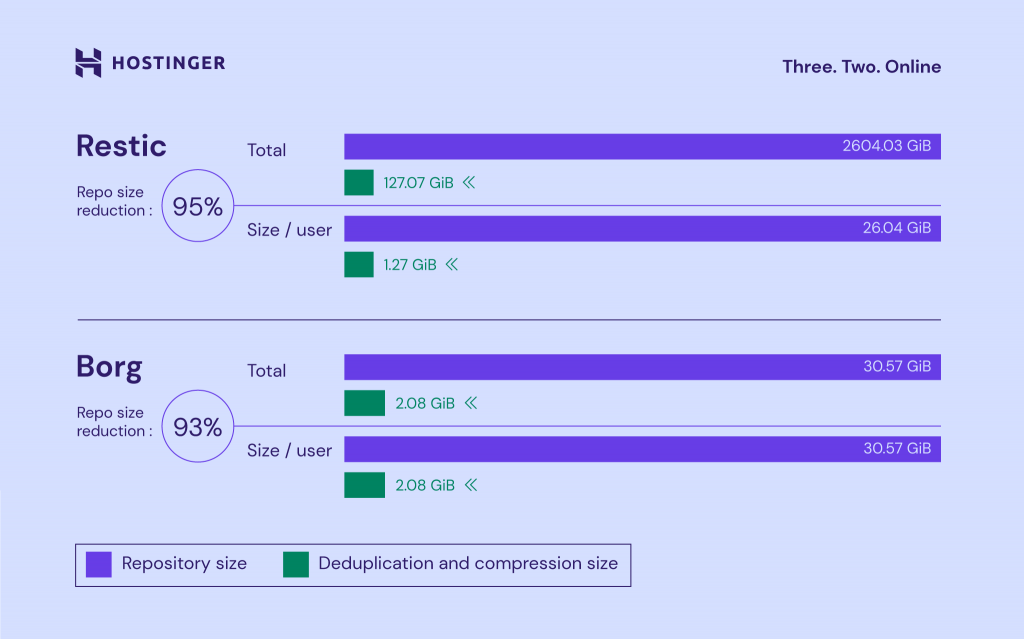Choosing the Best Backup Solution: Restic vs. Borg

At Hostinger, we prioritize the security of client data and the efficient operation of our data infrastructure. As part of our commitment, we recently conducted an in-depth analysis comparing two popular data backup solutions: Borg and Restic.
In this blog post, we’ll explore the performance differences between them, highlighting Restic as the alternative for shared hosting client backups.
Store More With Less
Both Restic and Borg utilize deduplication. The difference lies in their implementation of the backup service. With Borg, each user has a dedicated backup repository, resulting in potential data duplication across repositories. Restic, on the other hand, opts for a shared repository approach, where a specific group of users shares an S3 bucket. This significantly enhances deduplication opportunities, as evident from our findings.
We compared the average repository sizes for both Restic and Borg backups. In the Netherlands, the average 100-user Restic repository size was 127.07 GiB, while the average single-user Borg repository size was 2.08 GiB. This indicates Restic’s potential for more efficient storage utilization.

We also compared the storage efficiency of Restic and Borg backups at different data centers. Restic’s performance was impressive, requiring only around 58% of the storage space Borg needs to store the same amount of client data.
Factors such as data replication contribute to this result – Restic benefits from storage optimization techniques like erasure coding at larger data centers. In comparison, each of our Borg backup servers relied on traditional Raid techniques.
Ultimately, Ceph-based backuping is more reliable and more efficient – literally, storing more with less.
Bytes per Byte
Transferring backups over the network is a critical aspect to consider. Our analysis reveals that both Restic and Borg perform similarly regarding data traffic. For instance, at a growing data center like ours in India, the weekly traffic for Restic and Borg accounted for approximately 7-8% of the space taken up by all files on all servers.
Say Goodbye to Errors
Unlike Borg, Restic repositories showed no cases of corruption in our analysis. Moreover, migrating from Borg to Restic proved seamless from the client-side perspective, allowing for the reuse of existing Borg backup servers in the Ceph infrastructure.
Speed Matters in Business
While Restic used slightly more CPU and RAM, it stood out with faster backup creation times. The average was approximately 111.517 seconds, compared to Borg’s 211.332 seconds. This increased speed not only improves overall efficiency but also ensures timely backups.
Conclusion
At Hostinger, we love optimization. We seek the most effective solutions, and Restic has proven itself. It offers higher deduplication rates, improved storage efficiency, faster backup creation times, and is more reliable than comparable solutions.
We’ll continue actively monitoring the performance of our tech stack and keep you updated with upcoming blog posts. Leave a comment if you have any questions or concerns regarding Restic or our technology.



